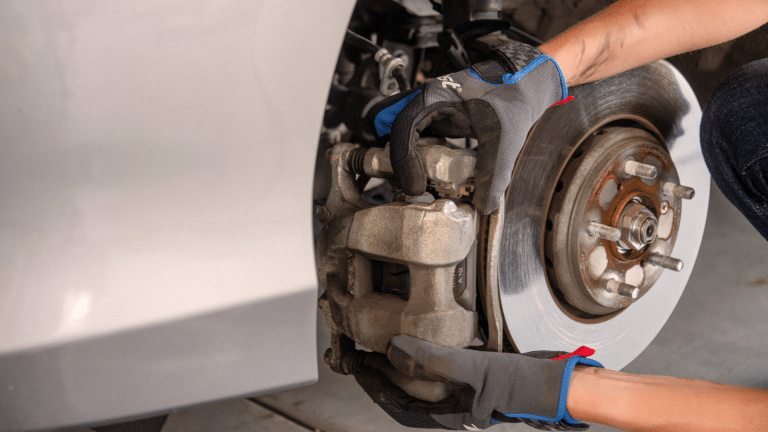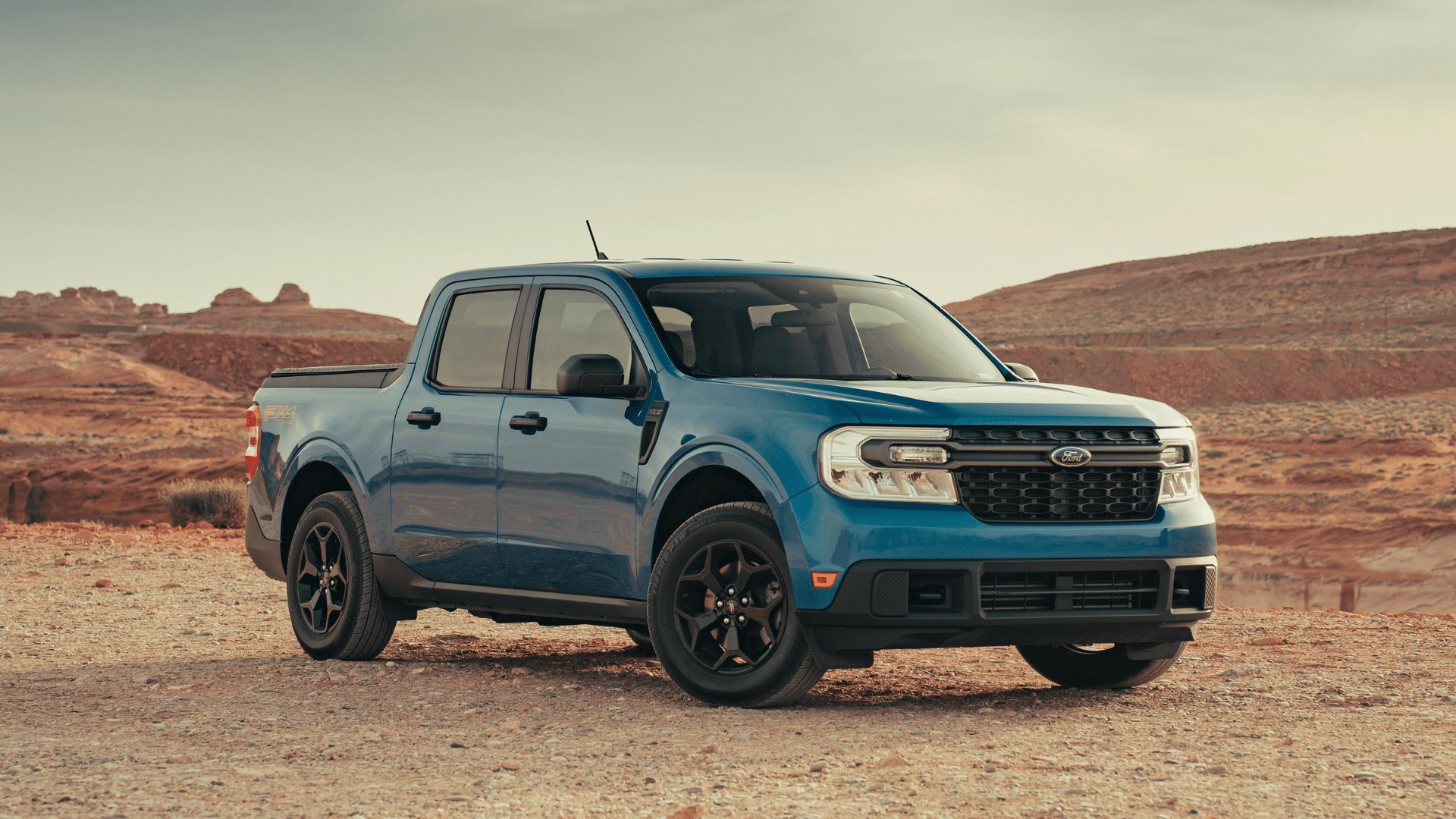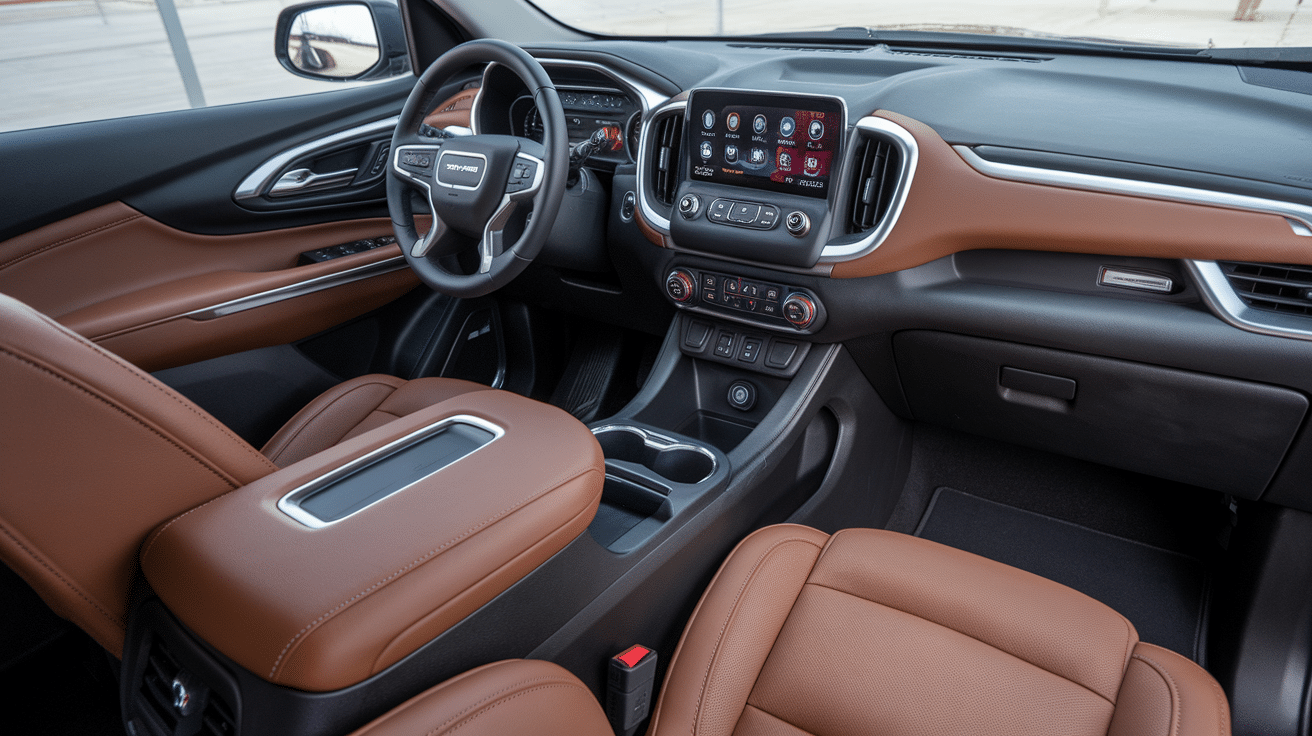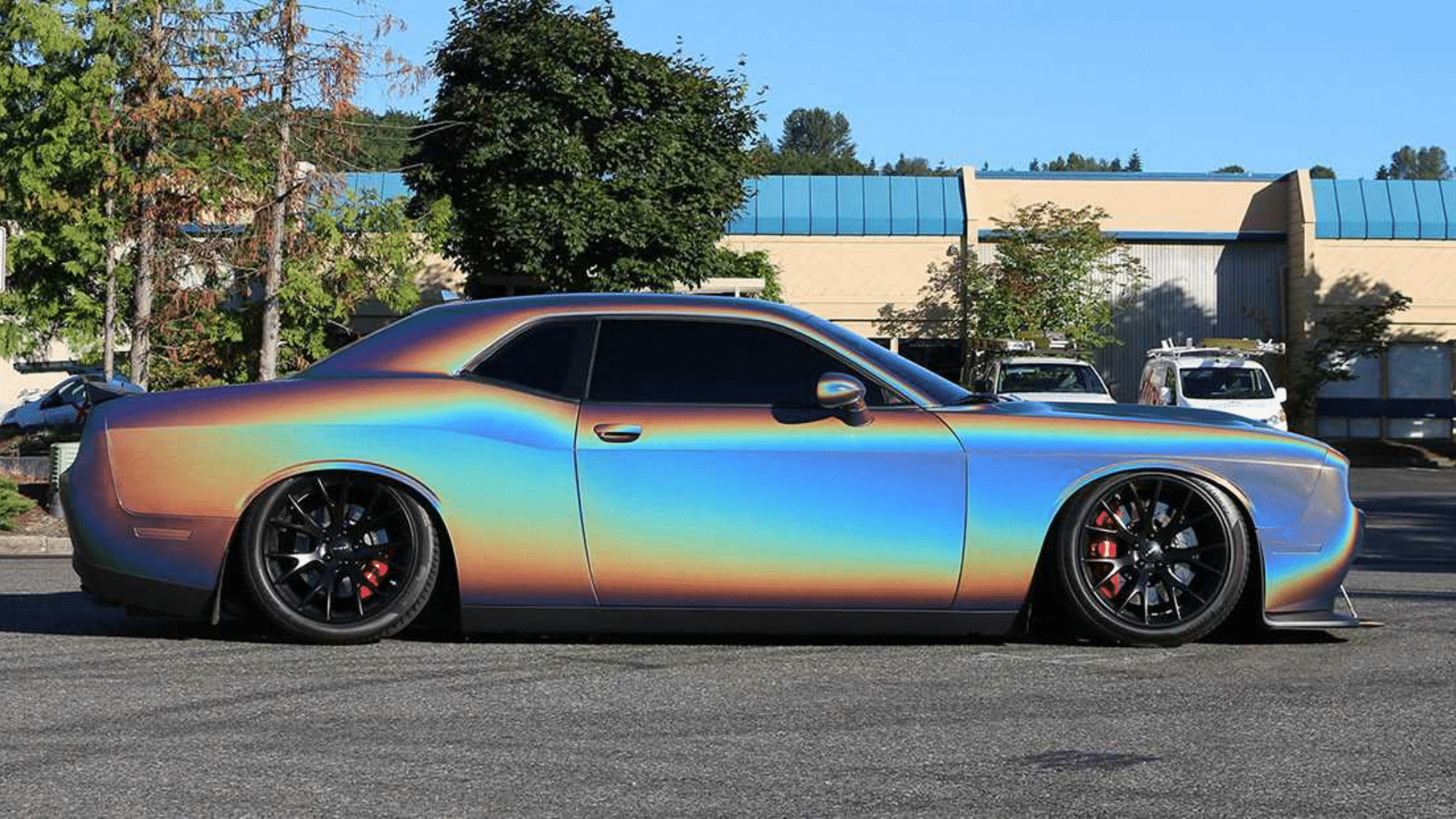Have you ever hit the brakes and just trusted your car would stop?
Most of us do it all the time without thinking. But behind that simple motion is an entire system working hard to slow your vehicle down safely.
One key part of that system is the brake caliper. You won’t see it often, but it plays a big role every time you press the pedal.
It takes the pressure from your foot and helps turn it into the stopping power your car needs.
In this guide, I’ll cover:
- What brake calipers are
- How they work
- Warning signs to look out for
- When it’s time to replace them
If you’re new to car maintenance or just curious about how things work, this guide will give you a clear look at one of the most important parts of your brake system.
What Is a Brake Caliper?
A brake caliper works like a clamp, gripping a spinning disc (the rotor) to slow your car down, similar to squeezing bicycle brakes.
In a disc brake system, the caliper sits over the rotor, which is connected to each wheel.
When you press the brake pedal, the caliper pushes brake pads against the rotor, creating friction to slow or stop the wheel.
The pads press on both sides of the rotor like fingers, making this simple system a key part of staying safe on the road.
Let’s see a quick breakdown:
- Location: Around the wheel’s rotor
- Material: Usually made of strong metal
- Action: Squeezes brake pads against the rotor
- Goal: Stop or slow the wheel
Pressing the brake pedal sends hydraulic fluid to the caliper, which in turn pushes pistons that press the brake pads against the rotor.
This creates friction to slow or stop the vehicle, always aiming for safe, reliable braking.
Functioning of a Brake Caliper
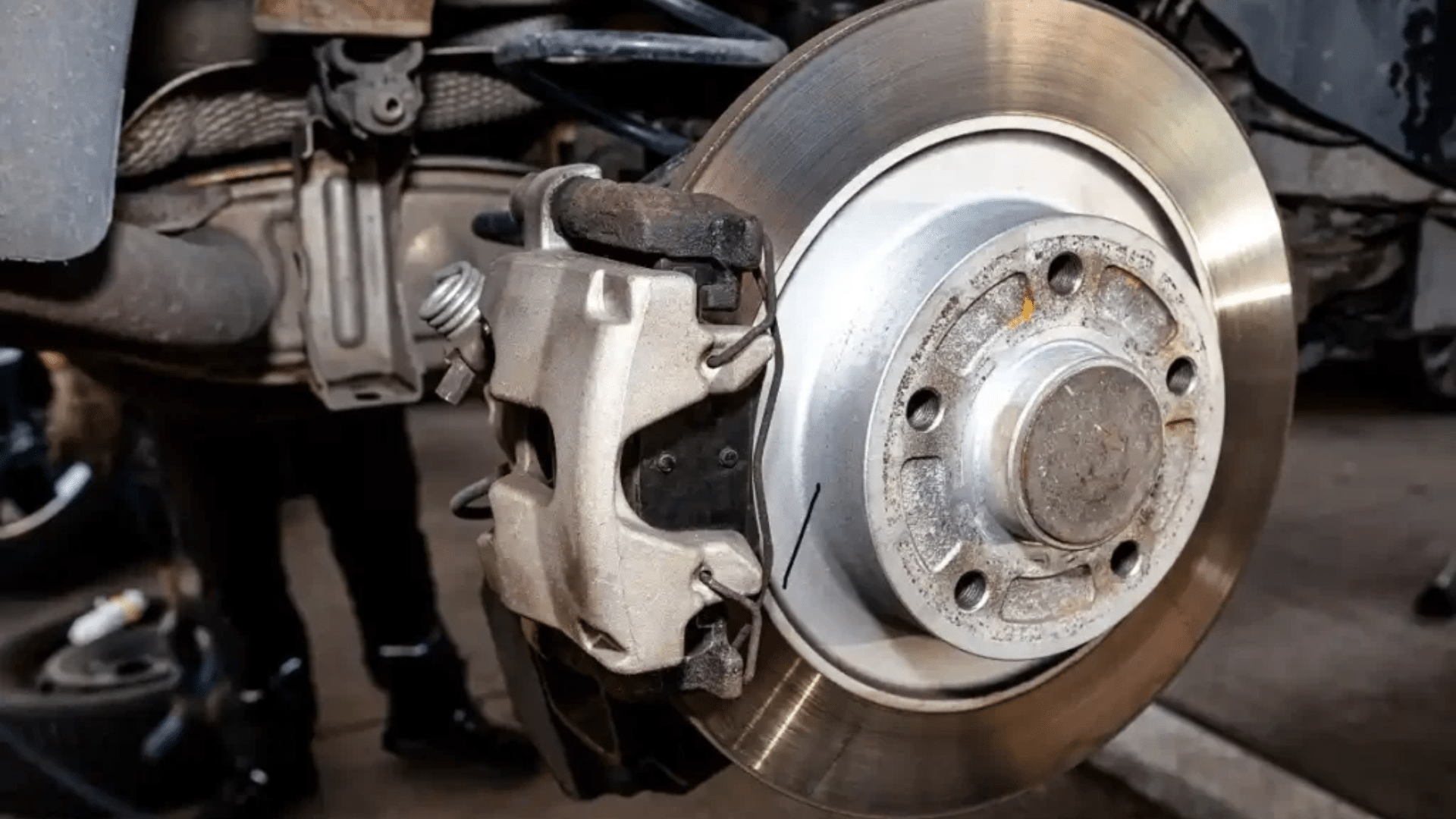
The brake caliper is a key part of the disc brake system. It presses the brake pads against the rotor to slow or stop the wheel. Here’s how it works:
1. How brake fluid creates stopping power: It’s a simple process. When you press the brake pedal, it sends fluid to the caliper, which then applies pressure to stop the car.
2. The hydraulic highway: As you press the pedal, this special fluid travels through brake lines with incredible precision. Think of it like water rushing through a narrow pipe, but with purpose and power.
3. Pistons in action: Inside the brake caliper, the pistons start moving. These small but mighty metal rods respond to the brake fluid’s pressure. They push outward with calculated force, creating a precise squeeze on the brake pads.
4. Creating friction: The brake pads then press against the rotor, that spinning metal disc near your wheel. Imagine two hands clapping together, but with immense stopping power. This contact creates friction, which slows down the rotation of your wheel.
The harder you press the pedal, the more pressure builds. More pressure means stronger friction and quicker stopping.
It’s a brilliant but straightforward mechanical dance that happens in milliseconds every time you need to slow down or stop. Some interesting facts about this process are:
- Brake fluid doesn’t compress
- Pistons move simultaneously
- Friction converts the wheel’s motion into heat
- This happens multiple times during a single drive
Different Types of Brake Calipers
When it comes to your vehicle’s braking system, brake calipers play a crucial role in stopping your car safely and efficiently. Let’s break down the main types of brake calipers you’ll encounter:
1. Floating (sliding) Calipers
Most cars use floating calipers. These calipers can move slightly from side to side.
When you press the brake, the caliper shifts and pushes one brake pad against the rotor. It’s a basic design that works well and doesn’t require a significant investment.
2. Fixed Calipers
Fixed calipers are common in high-end and sports cars. They don’t move like floating calipers. Instead, they have pistons on both sides of the rotor.
This setup gives more even pressure during braking, which helps the car stop faster and more smoothly.
3. Specialty Calipers
Some vehicles use more advanced brake systems. Opposed piston calipers have pistons on both sides that face each other. This creates balanced pressure for better control.
Ceramic performance calipers are another option. They’re lighter than regular calipers and provide strong braking, often used in performance cars.
When to Replace Brake Calipers?
Knowing when to replace your brake calipers is crucial for maintaining your vehicle’s safety and performance. These are the key indicators that suggest it might be time for a replacement:
1. Understanding Caliper Lifespan
Brake calipers don’t last forever. On average, they last for approximately 50,000 to 70,000 miles. But their lifespan can vary based on how you drive.
If you frequently stop for city driving, your calipers may wear out sooner.
2. Warning Signs of Trouble
Your car gives signs when the calipers aren’t working right.
Watch for squealing or grinding sounds, uneven braking, the car pulling to one side when stopping, or signs of brake fluid leaking.
These are all warnings that something may be wrong with the brake calipers.
3. Factors that Speed up Wear
Certain conditions can cause your brake calipers to wear out faster than normal. Road salt can cause rust and corrosion over time.
Too much heat from frequent braking can damage the rubber seals inside the caliper.
Dirt and debris can also lead to stuck pistons, which affect how the caliper works.
Why Early Detection Matters?
It’s important to catch brake caliper problems early. Ignoring them can lead to higher repair costs, unsafe driving, or even total brake failure.
Most mechanics suggest checking the brake system every 12,000 miles. It’s like a regular checkup to keep your car in good shape.
Fixing small issues early can help you avoid bigger problems down the road.
What Are the Symptoms of a Bad Brake Caliper?
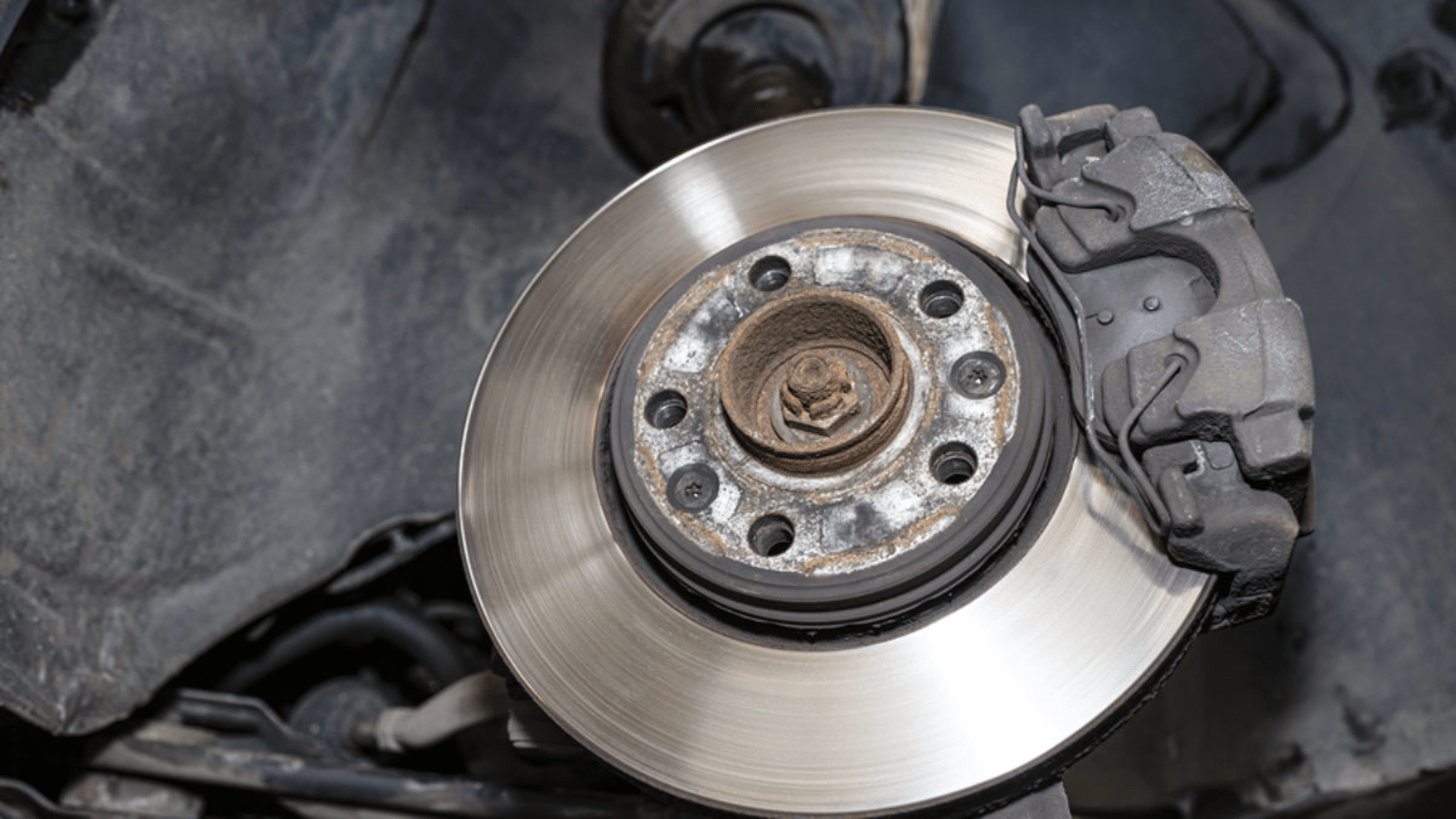
A bad brake caliper can affect how your vehicle stops and may lead to more serious brake problems if ignored. These are some common signs to watch for:
1. Uneven braking: Imagine driving and your car starts pulling to one side like a stubborn shopping cart. This isn’t normal. When a brake caliper sticks or fails, it creates uneven pressure.
2. Brake fluid leaks: Brake fluid looks like light oil and has a distinct smell. If you spot these puddles near your wheels, then your caliper’s seals might be damaged. Leaking fluid means your brake system is losing its stopping power.
3. Noises you can’t ignore: Cars shouldn’t sound like a metal band when braking. High-pitched squeals or grinding noises mean trouble. These sounds happen when brake pads wear down or calipers get stuck.
4. Soft pedal problem: A brake pedal that feels mushy or goes too far down is scary. When calipers fail, your brake pedal loses its usual firm feel. Pressing it becomes like stepping on a sponge – not something you want when trying to stop quickly.
5. Burning smell: Ever smell something burning after driving? That’s not good. A stuck caliper creates constant friction, generating heat. This burning odor means your brake system is overheating and needs immediate attention.
Quick Warning Signs Checklist
- The car pulls to one side
- Wet spots near wheels
- Weird brake noises
- Soft brake pedal
- Burning smell
Don’t ignore these signals. Your safety depends on functioning brake calipers.
Maintaining Brake Calipers
Maintaining your brake calipers is essential for safe driving and long-lasting brakes. Here are key tips to keep them in top shape:
1. The Regular Check-Up Plan: Brake calipers need regular care to keep working properly. Most mechanics recommend a full brake inspection every 12,000 miles. It’s a way to catch early signs of wear and keep your braking system in good shape.
2. Cleaning: Dirt is a brake caliper’s worst enemy. Road grime, salt, and dust can cause serious problems. A simple cleaning prevents buildup that makes calipers stick. Use brake cleaner and a soft cloth to keep things smooth.
3. Slide Pins: Slide pins are like the joints in your caliper’s movement. Keeping them lubricated prevents sticking and uneven wear. A small amount of high-temperature brake grease goes a long way. Think of it like oil for a squeaky door hinge.
4. Brake Fluid: Brake fluid wears out over time and needs to be replaced. Most car manuals suggest changing it about every two years. Fresh brake fluid helps prevent rust inside the system and keeps everything working properly.
How Often Do You Need to Replace Brake Calipers?
Knowing when to replace your brake calipers is key to staying safe on the road. A quick breakdown of what affects their lifespan and when to take action:
- Typical Lifespan: Most brake calipers last between 75,000 and 100,000 miles.
- Driving Habits Matter: Frequent city driving and hard braking wear calipers out faster.
- Environment Counts: Road salt, coastal air, and moisture can cause rust and reduce lifespan.
- Not All Miles Are Equal: Highway drivers may get closer to 100,000 miles, while city drivers may need replacements sooner.
- Watch for Signs: Instead of relying on mileage alone, look for uneven braking, fluid leaks, or a soft brake pedal.
- Get Regular Inspections: Routine brake checks help catch caliper issues early and keep your system in top shape.
Conclusion
Brake calipers may be small parts, but they play a big role in keeping you safe.
Every time you press the brake pedal, it helps slow or stop your vehicle, protecting you and others on the road.
If you notice odd sounds, a change in how the brakes feel, or a burning smell, don’t ignore it; these are common signs your calipers might need attention.
Catching the problem early can save you money and prevent bigger issues later. It’s a good idea to have your brakes checked regularly, especially during routine service.
Most shops can do a quick inspection to make sure everything is working as it should.
Taking a few minutes to check your brake system can go a long way. It helps you avoid costly repairs and makes sure your car stays safe and reliable every time you drive.


